We use cookies to make your experience better. To comply with the new e-Privacy directive, we need to ask for your consent to set the cookies. Learn more.
Watering Forklift Batteries: The Complete Guide for Battery Room Operators
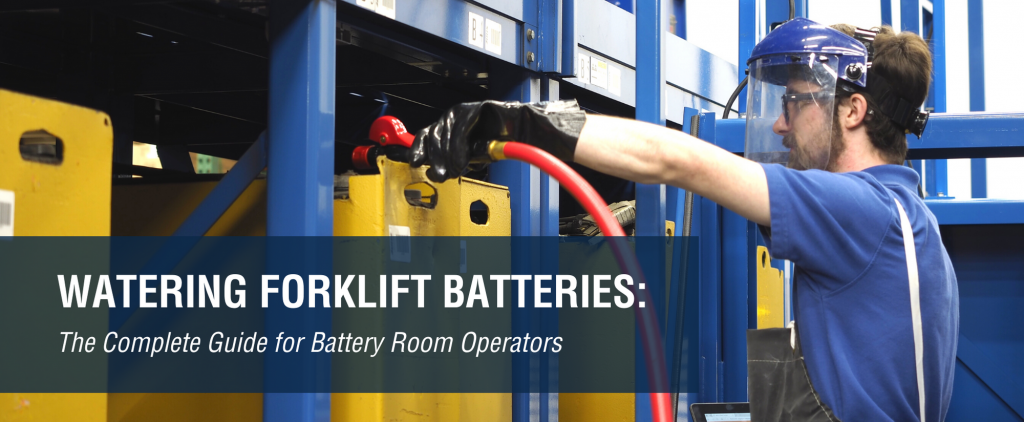
With proper maintenance, a forklift battery should last 1,500 cycles (or about five years). Unfortunately, that’s not a guarantee — and without proper maintenance, a battery might experience significant performance issues well before the scheduled end of its service life.
This guide covers every aspect of forklift battery watering, a crucial factor in determining the life of your lift trucks' power source. We’ve also included a checklist for managers to help them ensure that their battery rooms are avoiding some of the most common mistakes associated with this crucial process.
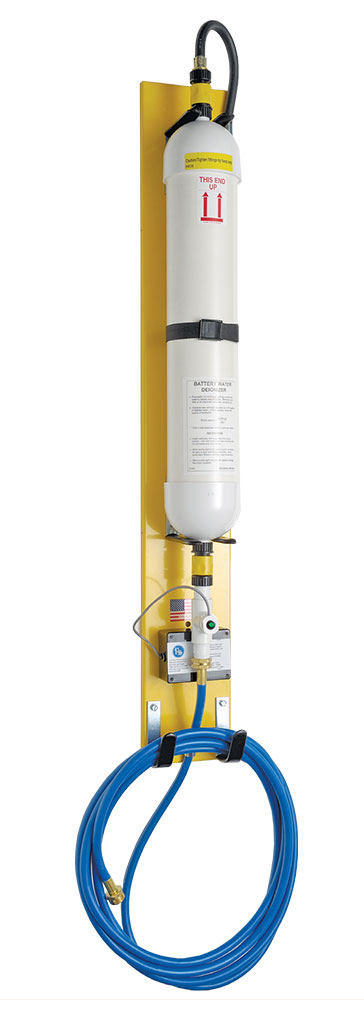 |
| Water Deionizing System |
Why Watering Forklift Batteries is Essential
To ensure that personnel take forklift battery maintenance seriously, managers should make sure that battery room workers understand the purpose of regular watering — and the consequences of ignoring the responsibility. That starts with some basic chemistry (and we’ll certainly keep it as basic as possible).
Each cell of a modern lead-acid battery contains a solution of sulfuric acid and water, along with lead dioxide plates and plates of pure, soft lead. In another article, we explain in detail how these components interact to provide lift trucks with steady voltage (see “How Lead-Acid Forklift Batteries Work"), but the important takeaway is that charging a battery can cause small amounts of water to break down into hydrogen and oxygen gasses.
Additionally, charging batteries produces heat, causing some water to evaporate. During a normal charge, a battery will lose some of its water. Refilling the water allows the battery to function as intended and improves safety in the battery room.
Is your battery room short on safety equipment? Find out with our free battery room safety survey.
A Dry Forklift Battery Means Lost Capacity
When water levels become too low, it creates a condition called “dry cell.” The lead plates are exposed to air, which causes them to oxidize. They lose part of their capacity, and once oxidation occurs, it can’t be reversed — the cell becomes less effective for the rest of the battery’s lifespan.
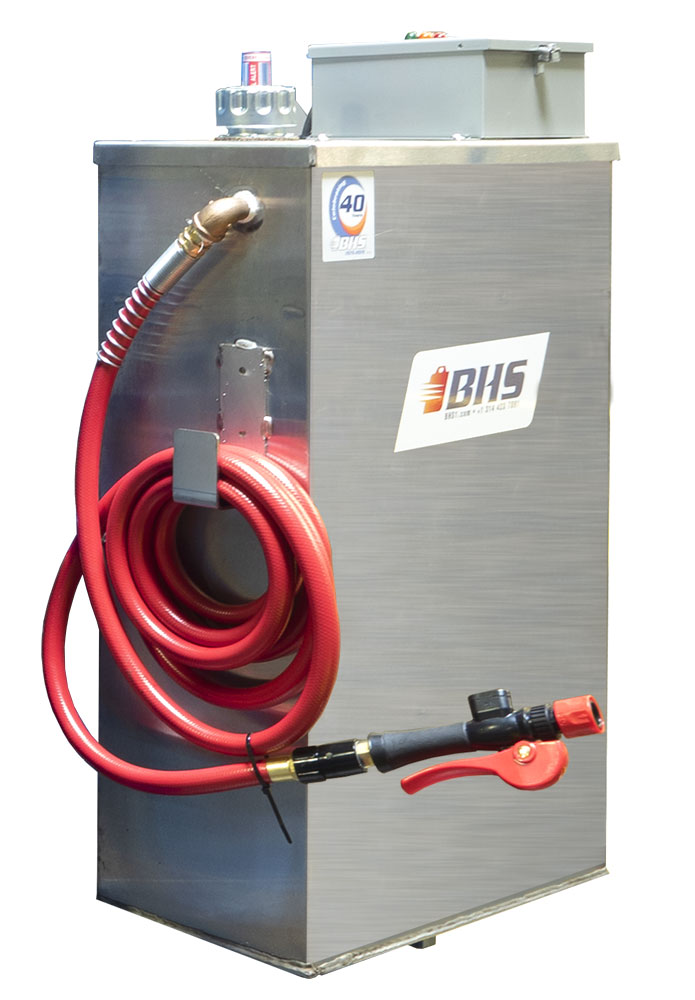 |
| BE Mounted Water Tank |
Obviously, a lead-acid battery with a reduced capacity won’t be as useful on the floor. It will require more maintenance, as the battery will need to be charged more frequently, and the battery will require early replacement.
Overwatered Batteries Can Boil Over
Overwatering a battery is arguably even worse, as the electrolyte solution will expand during the charge and could spill out of the battery, exposing workers to a serious hazard. Boil-overs may reduce the total capacity of a battery by as much as 5 percent, Again, that means more maintenance, less operator runtime, and earlier equipment replacement.
Remember, the battery is often the single most expensive component of the lift truck, but in some facilities, regularly under- or over-watering batteries could result in tens of thousands of dollars in lost productivity. Ensure that all battery room workers understand that battery watering isn’t an optional part of their work; it’s key to keeping the fleet running.
Deciding When to Water Forklift Batteries
The good news: Most lead-acid battery maintenance is fairly straightforward. Battery watering might involve some chemistry, but it isn’t rocket science — provided that workers follow a consistent process.
The best time to water a lift truck battery is right before the shift starts. For facilities with appropriately sized fleets, setting a schedule is easy: Simply water your batteries after the charge cycle and after batteries have had time to cool.
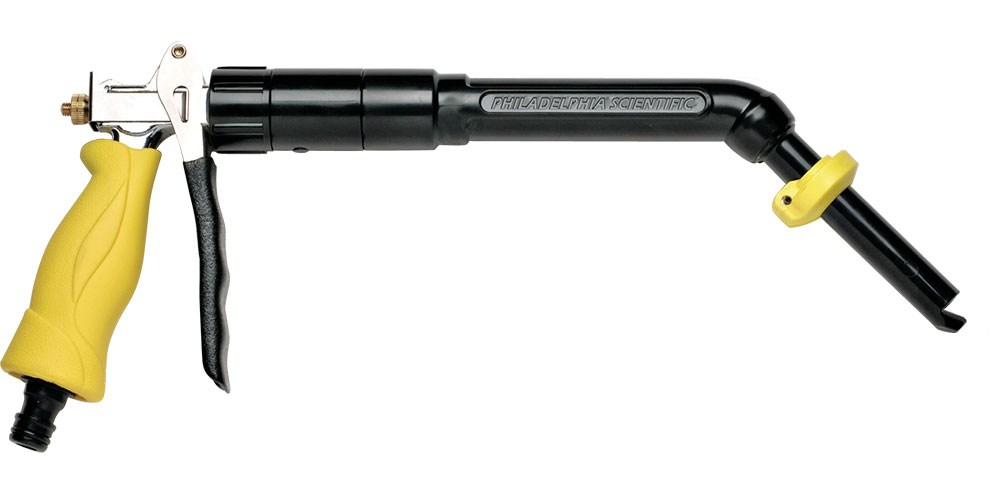 |
| Water Gun |
For fleets that keep their trucks on the floor 24/7, scheduling can be more complicated. Battery monitoring systems can help managers make intelligent decisions that keep trucks on the floor. In general, operators and battery room staff should keep these principles in mind:
-
Most manufacturers recommend watering batteries every 5-10 charges. Check your battery’s documentation for recommendations. However, when in doubt, check water levels.
-
If forklifts are used every day, make sure to check water levels at least once per week. This is a good general guideline, but some facilities will need to check more or less frequently. A good rule of thumb: If you’re adding water every time you check, you need to check more often.
-
Older batteries may need to be watered more frequently than newer batteries. Ideally, your watering schedule will take this into account. You might also need to check water levels more frequently if lift trucks usage changes (for instance, if an operation runs more forklifts during seasonal operations).
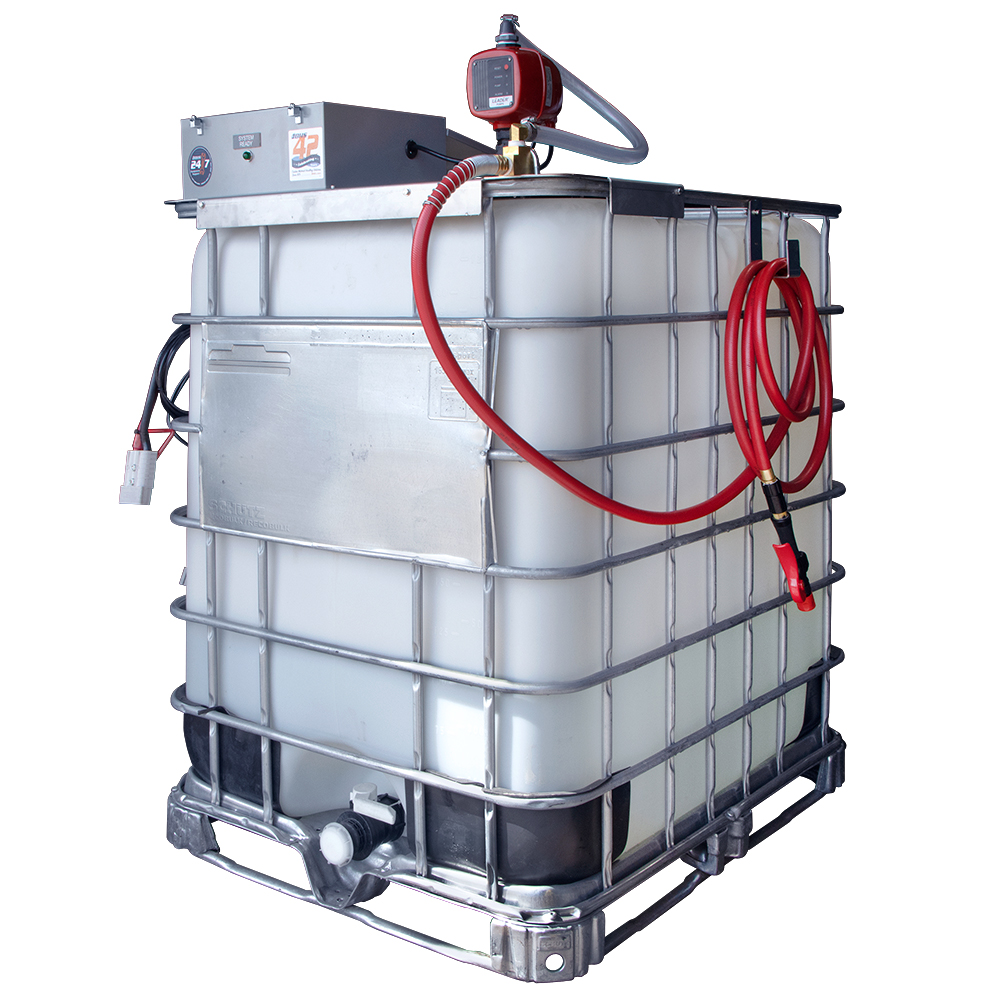
Battery Watering & Filling
System Tank -
Never water batteries before or during a charge. This increases the risk of boilovers, reducing the operating life of the battery.
-
Make sure to charge batteries to 100 percent before use. This is good practice, since modern batteries have a limited number of charges — partially charging a battery uses up one of those charges, so partial charges waste money. Eventually, partial charges can increase the frequency of watering, adding another unnecessary expense.
-
Don’t charge batteries mid-shift. Unless opportunity charging is absolutely necessary, avoid the practice. It puts unnecessary stress on batteries and leads to more routine maintenance (including more frequent watering).
Again, if operators check water levels frequently — and avoid adding water before or during the charge — watering is one of the easiest components of battery maintenance. There’s only one more crucial factor to consider: equipment.
Choosing Equipment for Watering Lead-Acid Lift Truck Batteries
In the past, operators simply watered batteries with a hose, a jug of water, or other non-specialized equipment. This is no longer standard practice, since basic tools increase the risk of under- or over-watering. Proper battery watering equipment is not particularly expensive, especially when compared with the cost of a new battery. To choose equipment, you’ll need to consider the size of your fleet and the specifications of your battery room, but the water supply is the most obvious place to start.
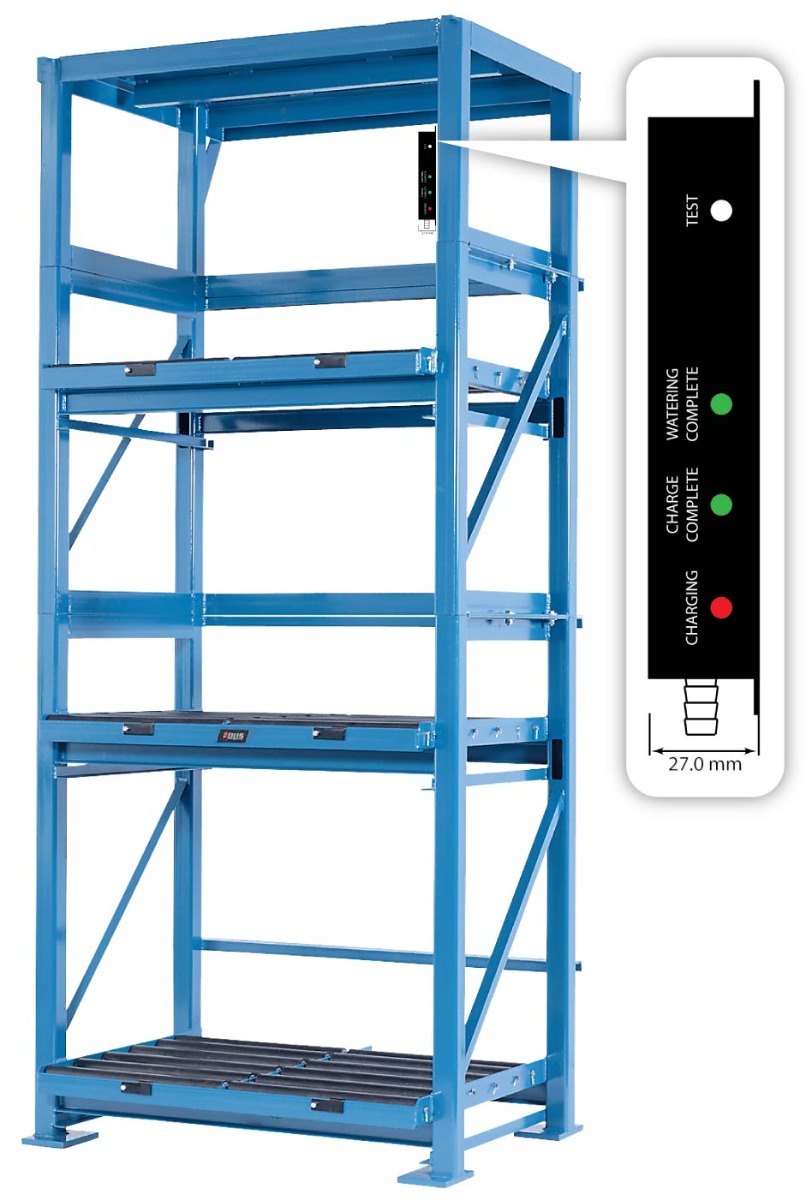 |
| Integrated Watering System |
Using the Right Water for Lead-Acid Batteries
Most tap water contains potassium, magnesium, calcium, and other minerals, making it unsuitable for use in battery watering applications. Water with high mineral content — also known as “hard" water — will upset the electrolyte balance, limiting the battery’s ability to store a charge.
Even when mineral content is relatively low, impure water can eventually reduce battery lifespan. Additionally, mineral buildup can cause corrosion, which can endanger workers by weakening the case of the battery.
There are two appropriate alternatives to tap water:
-
Distilled Water - Distilled water is created by heating water to create steam, then cooling and condensing that steam. The process is expensive but effective — distilled water is extremely pure.
-
Deionized Water - As its name implies, deionized water is created through an electrostatic process. Special resins remove mineral impurities, leaving behind water and some organic compounds. Organic compounds aren’t harmful to forklift batteries, so while deionized water is slightly less pure than distilled water, it’s appropriate for use in battery rooms. It’s also much less expensive than distilled water.
Deionized water is clearly the best option for battery rooms, and it’s just as effective as distilled water for lead-acid batteries. Some operations purchase distilled or deionized water directly from suppliers, but this drastically increases the cost of maintenance — and forces the operation to depend on regular deliveries from a third party.
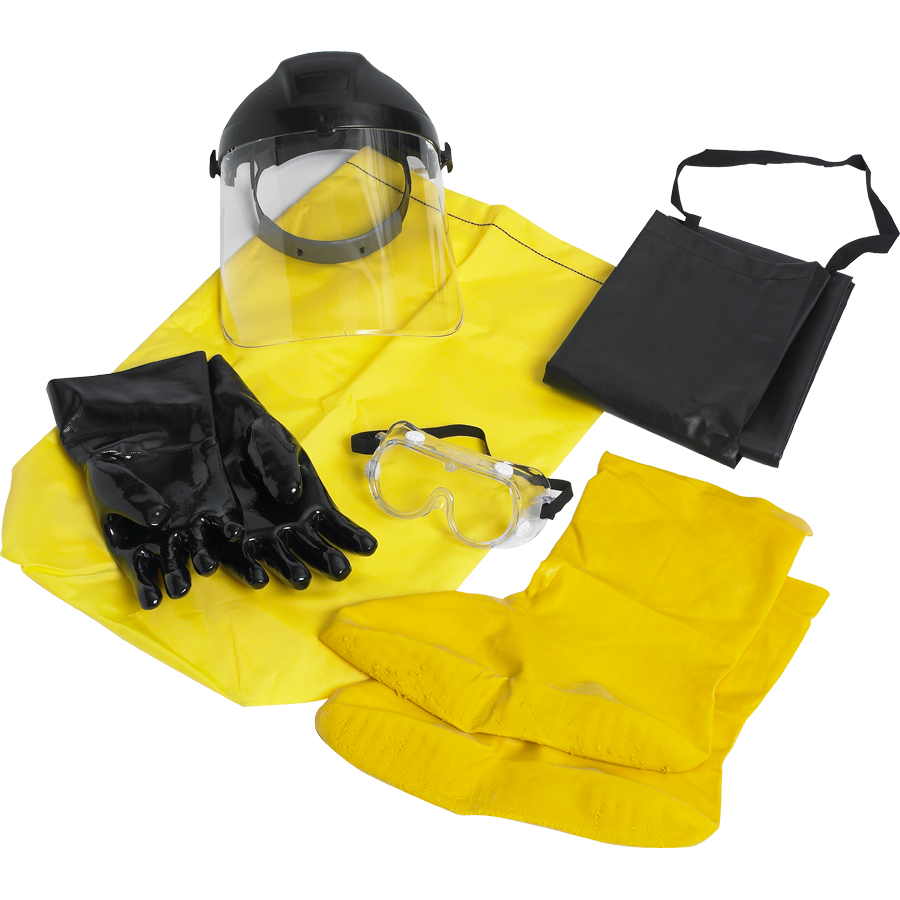 |
| Personal Protective Kit |
To keep costs low (and protect your batteries), consider an investment in a water deionizing system. These devices hook directly into the tap, using cationic and anionic resins to remove minerals. Products like the BHS Water Deionizing System (WDS-1) can operate at full-line pressure, and each cartridge produces an average of 600 gallons of purified water. A purity light indicates when the cartridge needs to be replaced, and operators can switch out cartridges quickly without tools.
Over time, onsite water deionizing systems pay for themselves by limiting the actual cost of water — and by keeping batteries operating at their best possible capacity.
Choosing Portable Battery Watering Equipment
Deionizing systems can make battery rooms more efficient by providing a single access point for pure water. However, some operations need to use portable equipment. This is common if a water source isn’t accessible from the battery room.
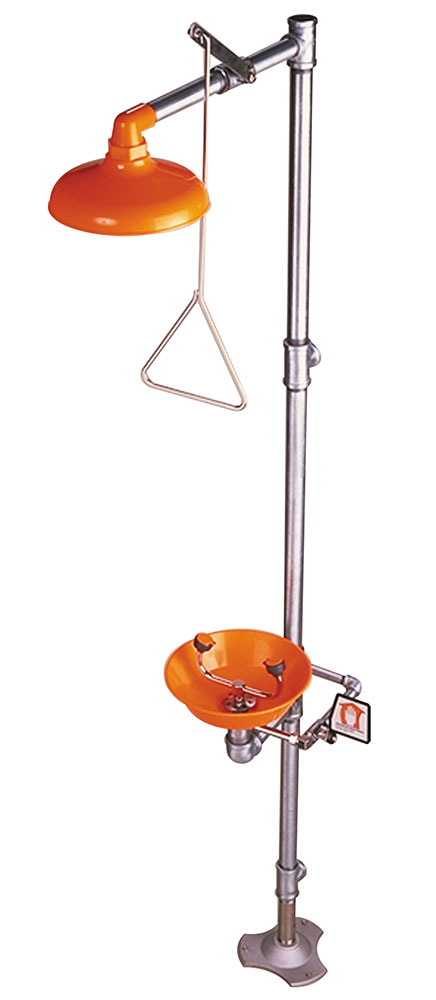 |
| Shower Eye Wash Station |
Portable systems allow operators to water batteries anywhere (though batteries should still be watered after a charge, never before or during charging). BHS offers an extensive range of battery water carts and tanks, varying in power source and capacity.
When purchasing a cart, consider the power source — AC powered or rechargeable systems are appropriate for most operations. For watering larger fleets in the battery room, the BE Mounted Water Tank (BE-WC-SS) mounts to Operator Aboard Battery Extractors, providing efficient watering when paired with a single-point watering system or a manual Battery Water Gun (WG-X).
Outside the battery room, a Battery Watering & Filling System Tank (FST-330) allows a single operator to water large numbers of decentralized industrial batteries without pausing for refills. This 330-gallon tank includes an integrated pump and a durable pallet base; use a lift truck or pallet jack to carry it throughout your facility. The FST-330 is ideal for park-and-charge applications, in which batteries are often scattered across a large number of charging stations.
Automated Battery Watering Systems: Worth the Expense?
A single-point, automated battery watering system can save workers time, and facilities with larger lift truck fleets should consider equipment like the BHS Integrated Watering System (IWS) to streamline battery watering procedures. Watering batteries by hand is significantly less efficient — that’s not a big deal for facilities with one or two lift trucks, but efficiency issues can quickly add up in larger facilities.
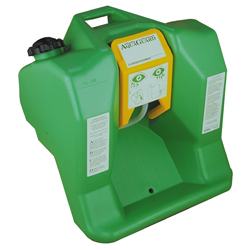 |
| Portable Eye Wash |
The BHS Integrated Watering System (IWS) attaches directly to battery charger cabinets. Hoses are threaded throughout forklift battery system stands; as a whole, the IWS is footprint-free, and it automatically activates at the end of each charge.
Automated systems have serious advantages with few drawbacks. They drastically reduce the risk of human error, optimize personnel time, and improve floor space by eliminating the need for other battery watering equipment. They’re more expensive to install and maintain than simpler systems, but for larger fleets, the return on investment is sizable.
Safety, Ergonomics, and Battery Watering
Managers should always consider ergonomic risks, particularly when setting up maintenance schedules for material handling equipment. Workers should have access to high-quality equipment that reduces those risks.
The Battery Water Gun (WG-X) can be combined with other BHS watering equipment to promote efficiency and safety in the battery room. Its curved handle prevents personnel from bending over batteries when watering by hand, while the automatic shutoff feature ensures precise watering. It features a fast 1.7 gal/min (6.4L/min) fill speed, a flow indicator, and a level control collar that can be adjusted to accommodate non-standard lift truck batteries.
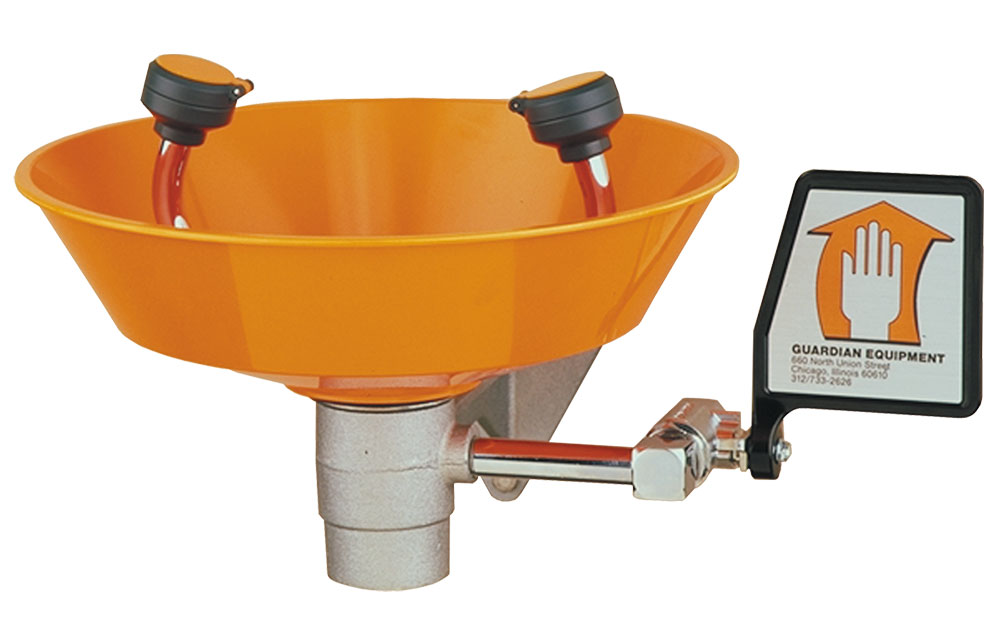 |
| Wall Mounted Eye Wash Station |
In addition to ergonomic equipment, workers should have access to splash goggles, aprons, face shields, and gloves. This personal protective equipment is not optional — lead-acid batteries contain sulfuric acid, and OSHA 1926.441(a)(5) specifically notes that PPE “shall be provided for workers handling acids or batteries.” The BHS Personal Protective Kit (PK-1200) addresses these needs.
The battery room should also have facilities for quickly drenching the eyes and body within 25 feet of battery handling areas, per OSHA 1926.441(a)(6). The BHS Shower Eye Wash (SEW-500), Portable Eyewash (PEW-700), and Mounted Eye Wash (EW-300) fulfill this requirement.
Finally, workers should understand the protocols for responding to a spill. Ensure that your facility has adequate battery hazard containment equipment and review clean-up procedures regularly.
Your Checklist for Better Lead-Acid Battery Watering
Use this checklist to determine whether your operation is on the right course. Remember, every facility is different — you may need to take additional steps to ensure appropriate battery maintenance for your entire fleet.
My battery room team understands the purpose and importance of battery watering.
My operation has established a process for assigning battery washing responsibilities to specific workers.
Batteries are watered every 5-10 charges or according to the battery manufacturer’s specifications.
Batteries are only watered after charging, never before.
Workers perform a visual inspection of batteries before watering. If the battery has signs of oxidation or corrosion (white crystals or dust on the terminals or plates), the worker will report the issue before attempting to water the battery.
My operation keeps a log for battery watering and other key maintenance tasks, or uses an electronic battery management system that creates these logs automatically.
Battery room workers understand how to safely respond to a boil-over and have an ample supply of appropriate spill response equipment.
Battery room workers understand how to maintain good ergonomics when watering batteries and have appropriate ergonomic equipment.
The operation has a process in place to allow workers to submit concerns about potential safety and ergonomic hazards, along with a process for addressing those concerns.
Batteries are cleaned regularly with appropriate supplies.
My battery watering equipment is suitable for the way my workplace operates. Damaged equipment is repaired or replaced immediately.
With the right tools and a well-considered approach, your operation can keep its fleets running smoothly and efficiently. For more guidance on battery watering equipment and other battery room outfitting, contact BHS at 1.800.BHS.9500.

